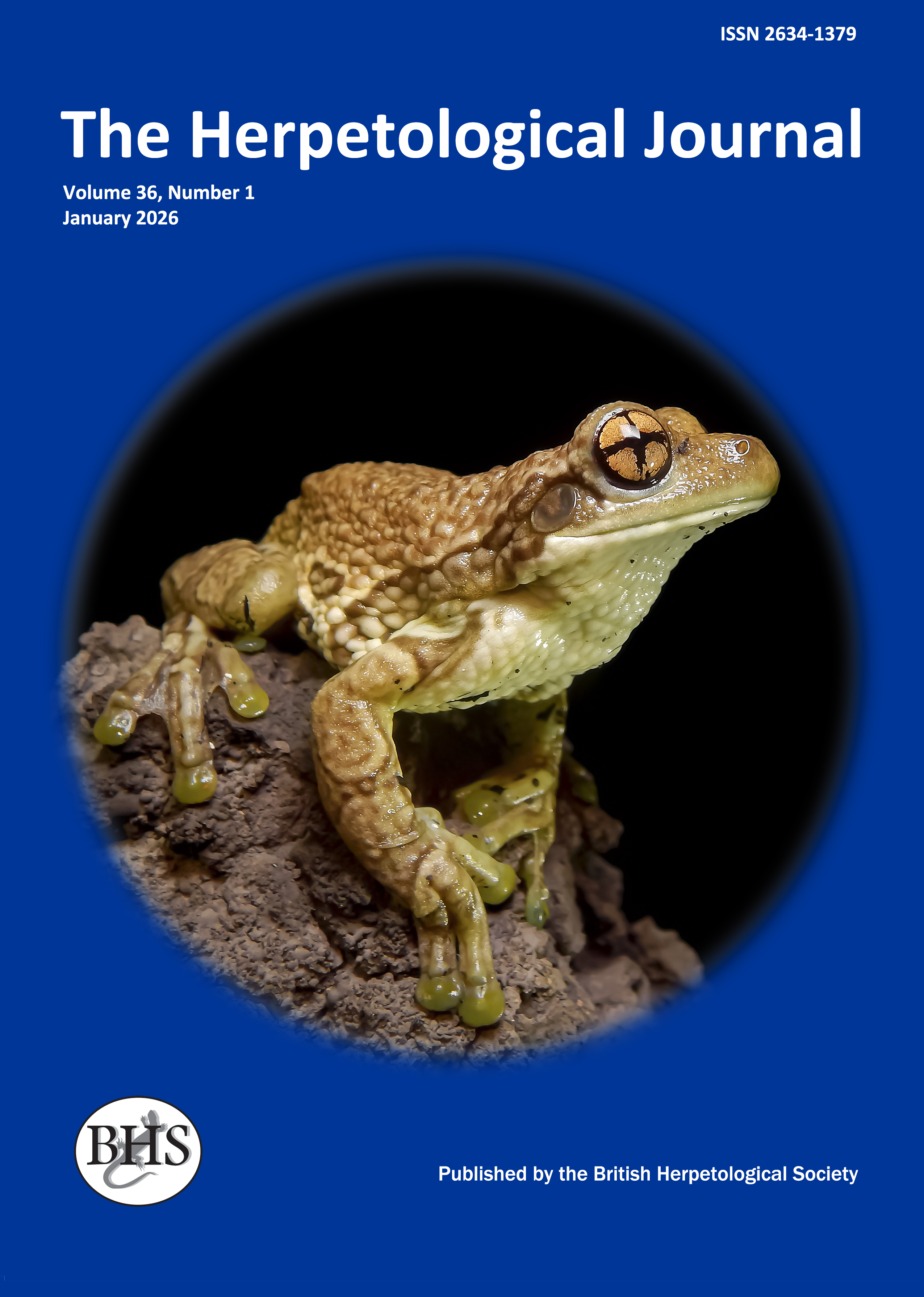
The Herpetological Journal
The Herpetological Journal is the Society's prestigious quarterly scientific journal. Articles are listed in Biological Abstracts, Current Awareness in Biological Sciences,Current Contents, Science Citation Index, and Zoological Record.
ISSN 0268-0130
2023 Impact Factor for the Herpetological Journal is 1.1, with the Journal sitting just below Quartile 2 in Zoology, at percentile 46.9
pdf 06. Urban areas as habitats for reptiles: the relative importance of environmental variables in predicting occurrence of common wall lizards Podarcis muralis
981 downloads
Open Access
DOI: https://doi.org/10.33256/35.3.226237
pp. 226-237
Authors: Ádám Simon & Will Cresswell
Abstract: Understanding how reptiles are affected by urban environments is important in predicting their occurrence and future use of these habitats, particularly as the degree of urbanisation increases. We investigated how temperature, solar heating, habitat quality, disturbance and predation risk predicted occurrence, and any age-related differences in the common wall lizard Podarcis muralis in Budapest, Hungary. Eleven line transects were carried out across diverse urban habitats, over 19 days in August 2023. Transects were repeated on average 5.3 times, and the presence of lizards was recorded along with measurements of environmental and confounding variables. Because of the high detectability of wall lizards when active, we assumed that multiple visits to the same place where no lizards were ever recorded were true negatives, and collected environmental data from a random sample of these absence points. Binomial, presence/absence General Linear Models showed that surface temperature was the most important predictor of lizard presence, but optimal surface temperature was lower for full sun exposure, confirming that solar heating increases the range of surface area at which habitats can be used. Lizards were present in moderately built-up areas across a broad range of surface temperatures, but less present in built-up environments under extreme temperatures, although they could be common there within a narrow temperature range. Humans and wind reduced lizard presence. Juvenile lizards were more sensitive to the presence of dogs and cats and were less present than expected in habitats with the best thermoregulatory properties, probably because of competition with adults. The results show the importance of urban structures that promote optimum temperatures and management of temperature by the lizards, as well as allowing avoidance of disturbance, although suboptimal areas are also important for juveniles. Access to sunlight and shelter should be considered when creating habitats for lizards in urban areas.
Keywords: conservation, thermoregulation, thermal ecology, habitat characteristics, disturbance, urban ecology

